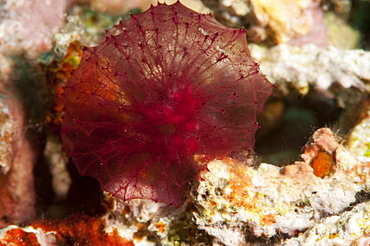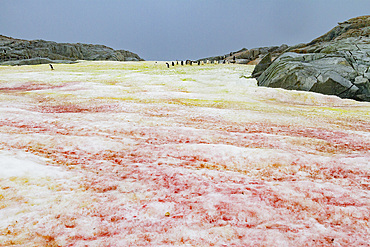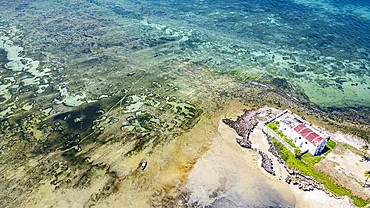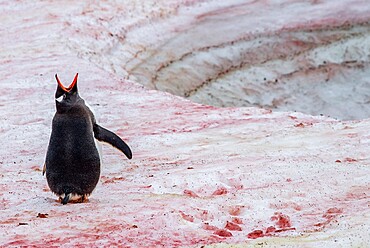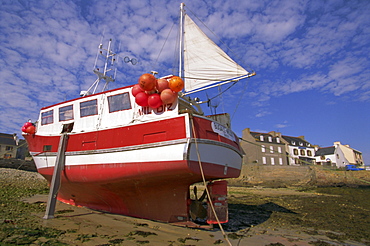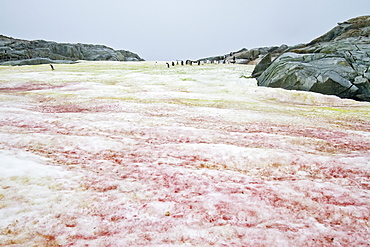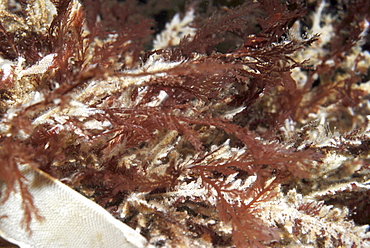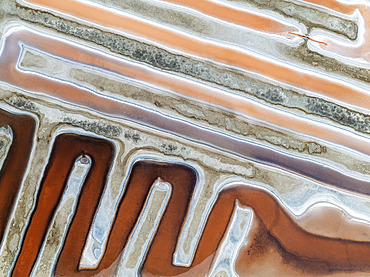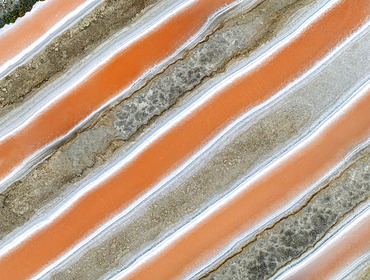Results
7 results found
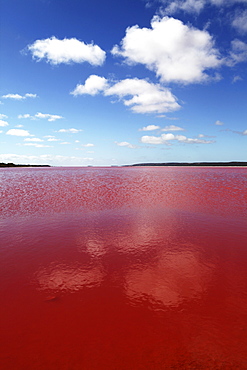
Edible algae provides a pink hue to the Hutt Pink Lagoon, Port Gregory, Western Australia, Australia, Pacific
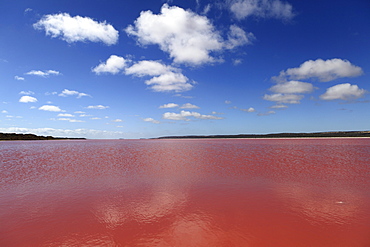
Edible algae provides a pink hue to the Hutt Pink Lagoon, Port Gregory, Western Australia, Australia, Pacific
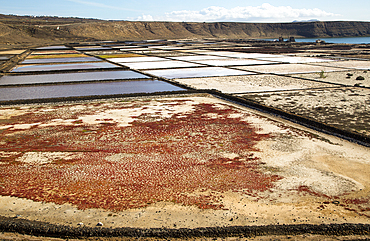
Traditional sea salt production, Salinas de Janubio, Lanzarote, Canary Islands, Spain, Atlantic, Europe
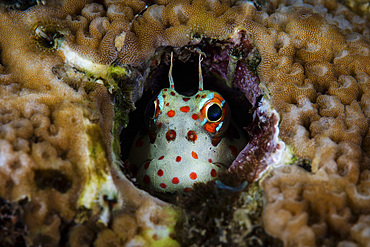
A cute red-spotted blenny, Blenniella chrysospilos, looks out from its protective home on a coral reef in Indonesia. This combtooth blenny feeds on algae.
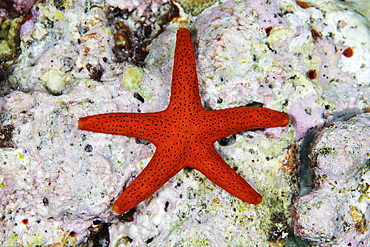
A small red starfish clings to coralline algae in Wakatobi National Park, Indonesia. This remote region is known for its incredible marine biodiversity and gorgeous reefs.
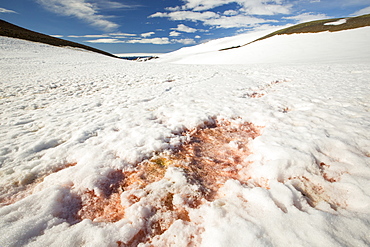
Red algae in the snow on a receding glacier in Suspiros Bay on Joinville Island just off the Antarctic Peninsular. The peninsular is one of the fastest warming places on the planet.
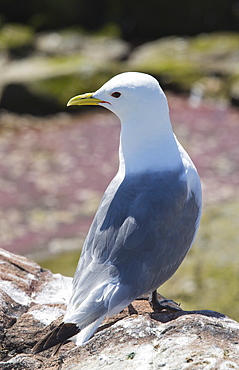
A Kittiwake, Rissa tridactyla, on the Farne Islands, Northumberland, UK, next to a pool with red algae. Kittiwakes have declined drastically due to climate change causing their main fish prey species to migrate further north to find cooler sea temperatures.
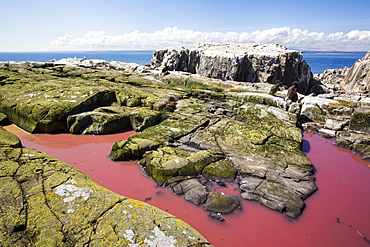
A pool coloured red from algae that have been fertilized by seabird guano on the Farne Islands, Northumberland, UK.
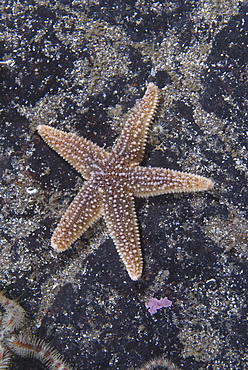
Common Starfish (Asterias rubens), two common starfish grazing on algae covered dark red rock, Eyemouth, Scotland, UK North Sea

Jourdan's turban (turbo jourdani) large gastropod shell, reddish-brown, Rottnest Island reef, wild, day, marine protected area, free-diving off, cool temperate waters of Western Australia. MORE INFO: Marine plant common kelp, a dominant feature of the underwater landscape. Protected areas are covered in lush growth of diverse algae, also red algea are here.
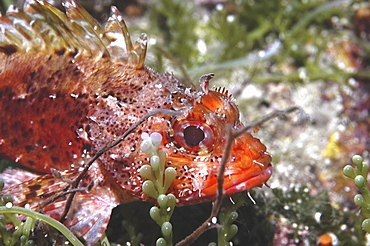
Small Rockfish (Scorpaena notata) resting amidst corals and algae, Gozo, Maltese Islands, Mediterranean
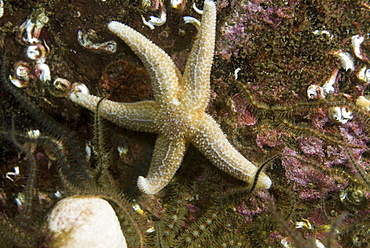
Common Starfish (Asterias rubens), common starfish grazing on algae covered dark red rock, Eyemouth, Scotland, UK North Sea
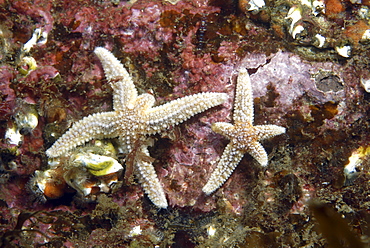
Common Starfish (Asterias rubens), two common starfish grazing on algae covered dark red rock, Eyemouth, Scotland, UK North Sea
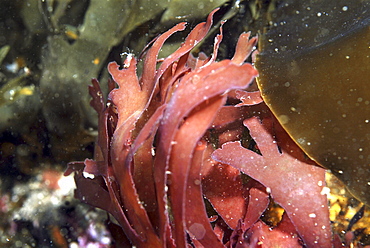
Red Rags (Dilsea carnosa), a typical red algae found around teh North Sea coast, St Abbs, Scotland, UK NORTH SEA

Red mineral deposits and green algae at a thermal spring, steaming hot springs, Whirligig Geyser, Noris Geyser Basin, Yellowstone National Park, Wyoming, USA, North America

Red mineral deposits and green algae at a thermal spring, steaming hot springs, Noris Geyser Basin, Yellowstone National Park, Wyoming, USA, North America
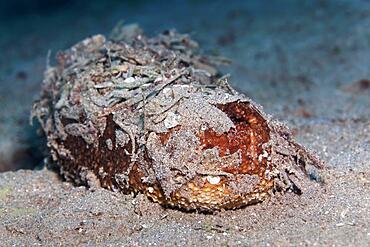
Sea cucumber also sea cucumber or holothuria (Holothuria) camouflaged with seaweed, Red Sea, Aqaba, Kingdom of Jordan
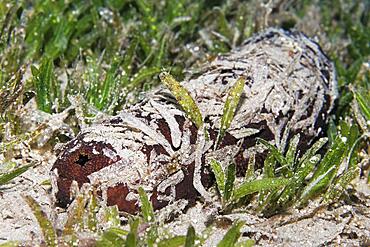
Sea cucumber also sea cucumber or holothuria (Holothuria) camouflaged with seaweed, Red Sea, Aqaba, Kingdom of Jordan
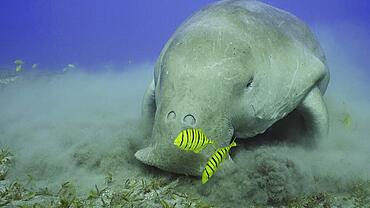
Portrait of Sea Cow (Dugong dugon) eating algae on seagrass meadow. Dugong accompanied by school of Golden trevally (Gnathanodon speciosus) fish feeding Smooth ribbon seagrass, Red sea, Egypt, Africa

Wide-angle shot of Sea turtle grazing on the seaseabed, slow motion. Great Green Sea Turtle (Chelonia mydas) eating green algae on seagrass meadow, Red sea, Egypt, Africa

Portrait of Sea turtle grazing on the seaseabed, slow motion. Great Green Sea Turtle (Chelonia mydas) eating green algae on seagrass meadow, Red sea, Egypt, Africa

This red encrusting sponge (Clathria sp.) is the most common of this family found in Hawaii. Here it has covered the calcium carbonate-producing seaweed, Halimeda kanaloana, Hawaii, United States of America
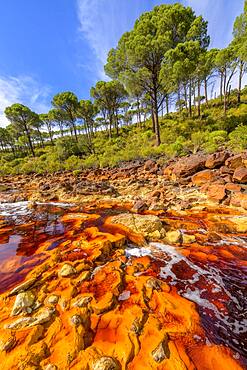
R?o Tinto, Andalucia, Spain *** Local Caption *** R?o Tinto ("Red River") is very acidic (Ph 2) and has a deep reddish hue due to iron dissolved in water. The acidity of the watercourse is linked to the drainage of pyrite, which is very present in the subsoil. Extremophilic and endemic bacteria and algae colonize the river bed, forming a fragile biofilm that evokes the hot springs of Yellowstone Park in the USA.
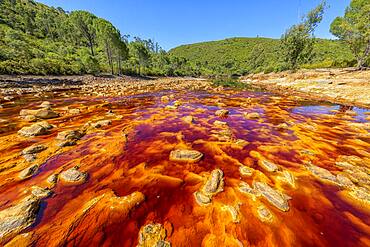
R?o Tinto, Andalucia, Spain *** Local Caption *** R?o Tinto ("Red River") is very acidic (Ph 2) and has a deep reddish hue due to iron dissolved in water. The acidity of the watercourse is linked to the drainage of pyrite, which is very present in the subsoil. Extremophilic and endemic bacteria and algae colonize the river bed, forming a fragile biofilm that evokes the hot springs of Yellowstone Park in the USA.
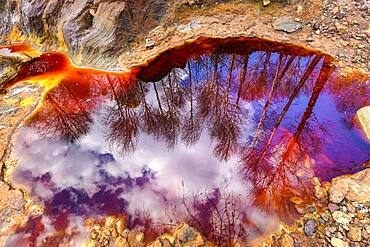
Reflections on Rio Tinto, near its source, Andalusia, Spain *** Local Caption *** R?o Tinto ("Red River") is very acidic (Ph 2) and has a deep reddish hue due to iron dissolved in water. The acidity of the watercourse is linked to the drainage of pyrite, which is very present in the subsoil. Extremophilic and endemic bacteria and algae colonize the river bed, forming a fragile biofilm that evokes the hot springs of Yellowstone Park in the USA.

Clay loaded with iron oxides and dried out, Rio Tinto, Andalusia, Spain *** Local Caption *** R?o Tinto ("Red River") is very acidic (Ph 2) and has a deep reddish hue due to iron dissolved in water. The acidity of the watercourse is linked to the drainage of pyrite, which is very present in the subsoil. Extremophilic and endemic bacteria and algae colonize the river bed, forming a fragile biofilm that evokes the hot springs of Yellowstone Park in the USA.
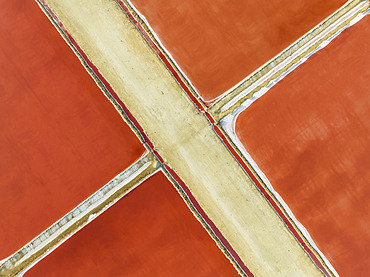
Saline ponds at the Bonanza salt works near Sanlúcar de Barrameda. The red colour depends on the level of salinity and is directly caused by the algae Dunaliella salina and brine shrimp. Aerial view. Drone shot. Cádiz province, Andalusia, Spain.
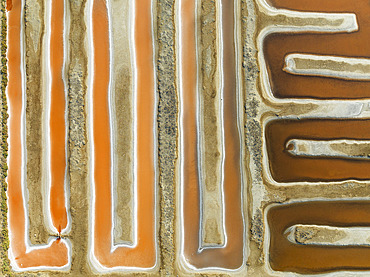
Saline ponds at the salt works near Chiclana de la Frontera. The orange-red colour depends on the level of salinity and is directly caused by the algae Dunaliella salina and brine shrimp. Aerial view. Drone shot. Cádiz province, Andalusia, Spain.
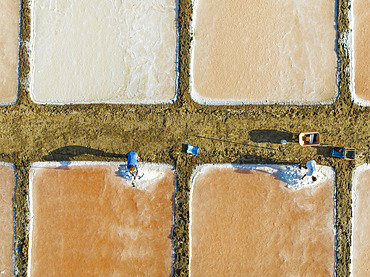
Harvesting salt at the saline ponds near Chiclana de la Frontera. The orange-red colour depends on the level of salinity and is directly caused by the algae Dunaliella salina and brine shrimp. Aerial view. Drone shot. Cádiz province, Andalusia, Spain.
